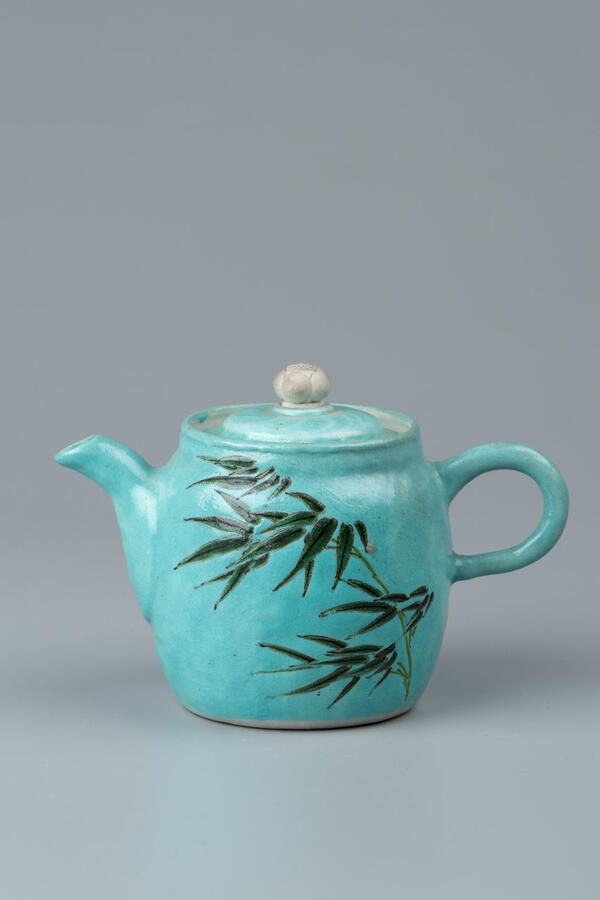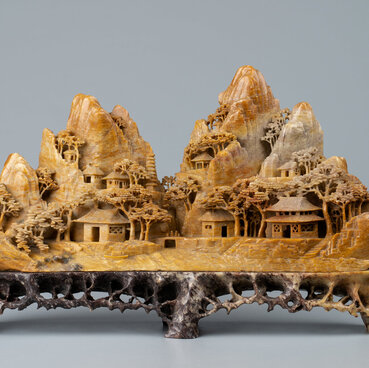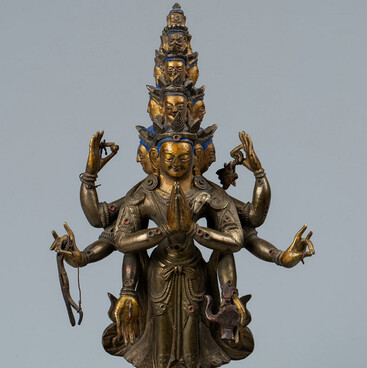The Samara Regional Art Museum presents an elegant Japanese Banko teapot with a hieroglyphic seal, which was intended for brewing medicinal herbs.
The rich merchant and amateur potter Numanami Gozaemon (1718 — 1777) is considered the father of the famous Banko ceramics. The word “Banko” literally means “ancient ten thousand”. Thin cream faience was produced at Gozaemon’s workshops. His ceramicware was often decorated with diamond-shaped patterns, images of flowers, landscapes and mythical characters. The combination of glazed and unglazed surfaces made the items unusual in texture and color. Gozaemon used simple ceramic backgrounds and decorated them with bright enamels and glazes which were made “according to Chinese recipes”. For a long time, Gozaemon kept the secret of how his glazes became so bright and how he combined different surfaces. After Godzaemon’s death, his grandson sold his notes with recipes and descriptions of techniques to the potter Mori Yusetsu (1808 — 1882), who was able to popularize Banko ceramics. It gained true success already in the second half of the 19th century.
Yusetsu’s descendants developed a method of molding items in various shapes. This made it possible to obtain relief (convex or embossed) patterns both on the inside and on the outer side of the products. Banko ceramics is distinguished by the most skillful modeling of the vessels, as well as by the finest, elegantly painted décor.
In Japanese, the teapot is called “kyusu”. The teapot presented in the museum has the shape of an irregular cylinder — a barrel, on one side of which there is a loop-shaped handle, and on the other a short spout. The “button” or “knob” on the lid is the smallest detail on the kettle, it is made in the shape of a lotus flower. The lotus is a symbol of purity and perfection, as it grows in swamps and mud, but always remains clean. The entire surface of the kettle is covered with turquoise glaze; one can see relief images of bamboo branches and plum blossoms on the body from both sides. Since the ancient times, plum and bamboo have symbolized longevity and resilience among the peoples of China, Korea and Japan.
The rich merchant and amateur potter Numanami Gozaemon (1718 — 1777) is considered the father of the famous Banko ceramics. The word “Banko” literally means “ancient ten thousand”. Thin cream faience was produced at Gozaemon’s workshops. His ceramicware was often decorated with diamond-shaped patterns, images of flowers, landscapes and mythical characters. The combination of glazed and unglazed surfaces made the items unusual in texture and color. Gozaemon used simple ceramic backgrounds and decorated them with bright enamels and glazes which were made “according to Chinese recipes”. For a long time, Gozaemon kept the secret of how his glazes became so bright and how he combined different surfaces. After Godzaemon’s death, his grandson sold his notes with recipes and descriptions of techniques to the potter Mori Yusetsu (1808 — 1882), who was able to popularize Banko ceramics. It gained true success already in the second half of the 19th century.
Yusetsu’s descendants developed a method of molding items in various shapes. This made it possible to obtain relief (convex or embossed) patterns both on the inside and on the outer side of the products. Banko ceramics is distinguished by the most skillful modeling of the vessels, as well as by the finest, elegantly painted décor.
In Japanese, the teapot is called “kyusu”. The teapot presented in the museum has the shape of an irregular cylinder — a barrel, on one side of which there is a loop-shaped handle, and on the other a short spout. The “button” or “knob” on the lid is the smallest detail on the kettle, it is made in the shape of a lotus flower. The lotus is a symbol of purity and perfection, as it grows in swamps and mud, but always remains clean. The entire surface of the kettle is covered with turquoise glaze; one can see relief images of bamboo branches and plum blossoms on the body from both sides. Since the ancient times, plum and bamboo have symbolized longevity and resilience among the peoples of China, Korea and Japan.





